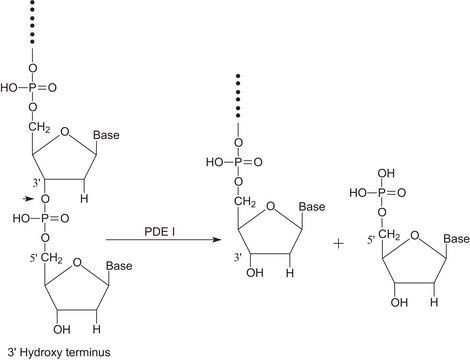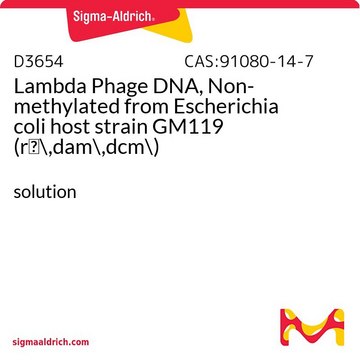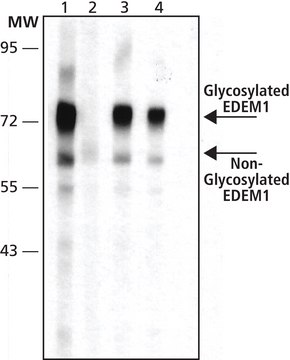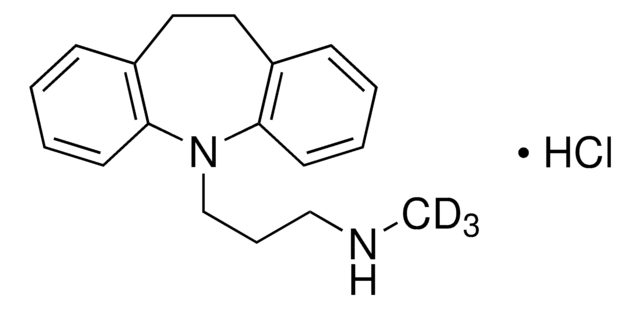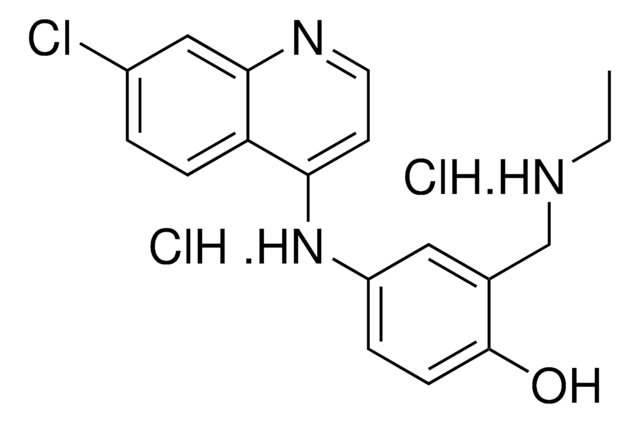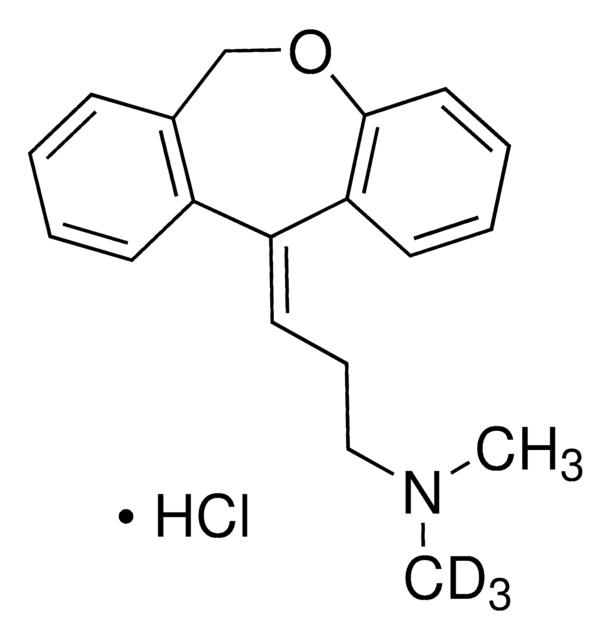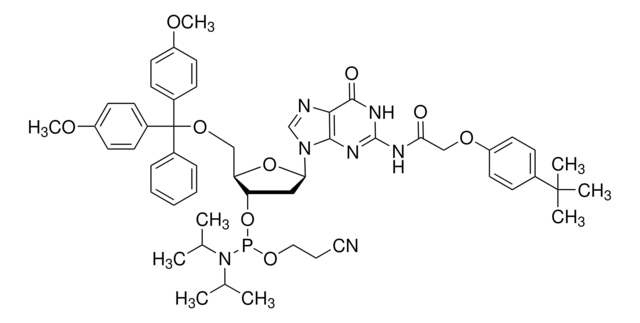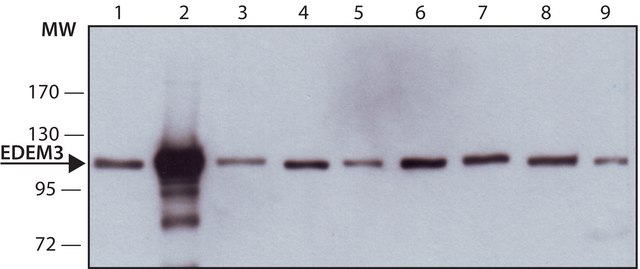推荐产品
生物来源
mouse
质量水平
偶联物
unconjugated
抗体形式
purified from hybridoma cell culture
抗体产品类型
primary antibodies
克隆
EDEM1-17, monoclonal
表单
buffered aqueous solution
分子量
antigen 75/65 kDa
种属反应性
mouse, human
浓度
~1.0 mg/mL
技术
immunoprecipitation (IP): suitable
western blot: 1-2 μg/mL using whole extracts of HEK-293T cells expressing recombinant human or mouse EDEM1
同位素/亚型
IgG2a
UniProt登记号
运输
dry ice
储存温度
−20°C
靶向翻译后修饰
unmodified
基因信息
human ... EDEM1(9695)
一般描述
Monoclonal Anti-EDEM1 (mouse IgG2a isotype) is derived from the hybridoma EDEM1-17 produced by the fusion of mouse myeloma cells and splenocytes from BALB/c mice immunized with a synthetic peptide corresponding to a fragment of human EDEM1. conjugated to keyhole limpet hemocyanin (KLH). EDEM1 (ER degradation-enhancing alphamannosidase-like protein 1) is a putative mannose binding lectin. In mammalian cells, EDEM1 is localized to the endoplasmic reticulum (ER), mainly as a soluble glycoprotein.
应用
Monoclonal Anti-EDEM1 antibody produced in mouse has been used in:
- immunoblotting
- immunoprecipitation
- immuno-electron microscopy
- immunohistochemistry (IHC)
生化/生理作用
EDEM1 (ER degradation-enhancing alphamannosidase-like protein 1) has the ability to interact with the COOH-terminus of calnexin. It lacks mannosidase activity.
ER degradation-enhancing α-mannosidase-like 1 is an enzyme encoded by the EDEM1 gene in humans. It is a chaperone for rod opsin and its expression can be used to promote correct folding enhancing degradation of mutant proteins in the ER to combat protein-misfolding disease. The endogenous EDEM1 in cells that are not stressed by the expression of a transgenic misfolded protein reaches the cytosol and is degraded by basal autophagy. EDEM may maintain the retrotranslocation competence of NHK by inhibiting aggregation. It is also considered responsible for directing aberrant proteins for ERAD (ER-associated protein degradation).
外形
0.01M 磷酸缓冲盐溶液,pH 7.4,含 15mM 叠氮化钠。
免责声明
Unless otherwise stated in our catalog or other company documentation accompanying the product(s), our products are intended for research use only and are not to be used for any other purpose, which includes but is not limited to, unauthorized commercial uses, in vitro diagnostic uses, ex vivo or in vivo therapeutic uses or any type of consumption or application to humans or animals.
未找到合适的产品?
试试我们的产品选型工具.
储存分类代码
10 - Combustible liquids
WGK
nwg
闪点(°F)
Not applicable
闪点(°C)
Not applicable
法规信息
常规特殊物品
EDEM1 reveals a quality control vesicular transport pathway out of the endoplasmic reticulum not involving the COPII exit sites
Zuber C, et al.
Proceedings of the National Academy of Sciences of the USA, 104(11), 4407-4412 (2007)
Iwona Sokołowska et al.
The Biochemical journal, 436(2), 371-385 (2011-03-11)
Ricin is a potent plant cytotoxin composed of an A-chain [RTA (ricin A-chain)] connected by a disulfide bond to a cell binding lectin B-chain [RTB (ricin B-chain)]. After endocytic uptake, the toxin is transported retrogradely to the ER (endoplasmic reticulum)
Christine Insinna et al.
The Journal of neuroscience : the official journal of the Society for Neuroscience, 32(23), 8094-8104 (2012-06-08)
In absence of their natural ligand, 11-cis-retinal, cone opsin G-protein-coupled receptors fail to traffic normally, a condition associated with photoreceptor degeneration and blindness. We created a mouse with a point mutation (F81Y) in cone S-opsin. As expected, cones with this
Maria Kosmaoglou et al.
Journal of cell science, 122(Pt 24), 4465-4472 (2009-11-26)
Mutations in rod opsin, the archetypal G-protein-coupled receptor, cause retinitis pigmentosa. The majority of mutations, e.g. P23H, cause protein misfolding, resulting in ER retention, induction of the unfolded protein response and degradation by ERAD. If misfolded rod opsin escapes degradation
Human EDEM2, a novel homolog of family 47 glycosidases, is involved in ER-associated degradation of glycoproteins
Mast SW, et al.
Glycobiology, 15(4), 421-436 (2004)
我们的科学家团队拥有各种研究领域经验,包括生命科学、材料科学、化学合成、色谱、分析及许多其他领域.
联系技术服务部门